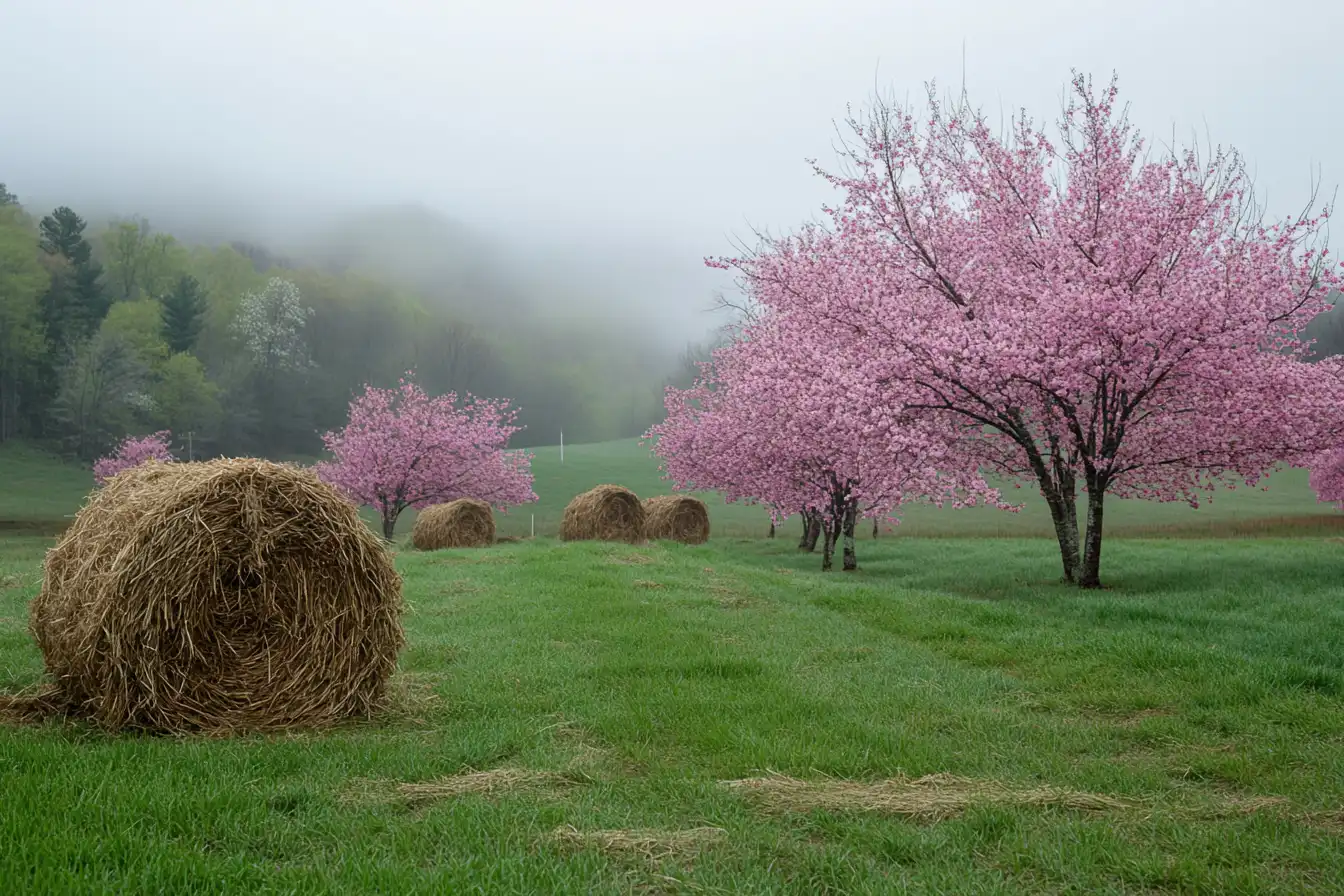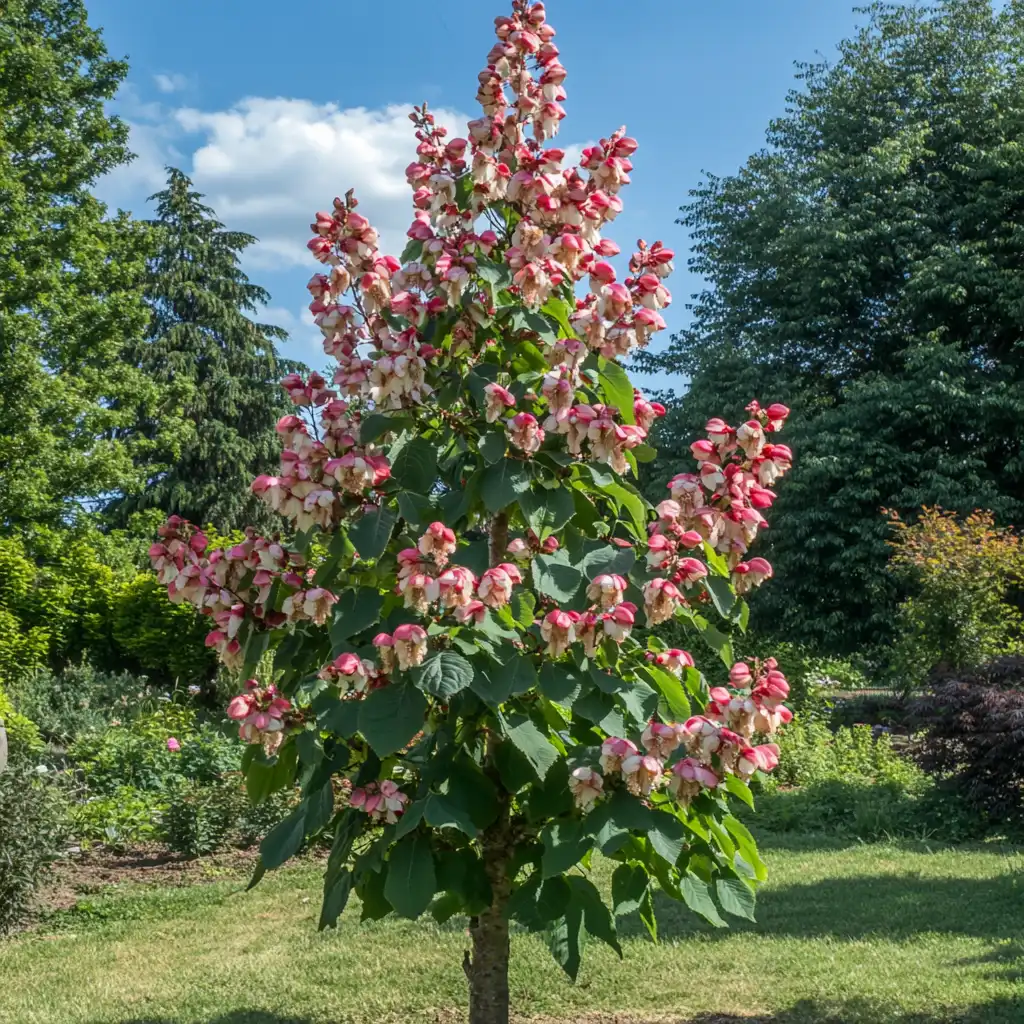If you’re looking for an elegant, natural way to block out nosy neighbors, conceal unwanted views, or add a serene sense of seclusion to your space, privacy trees are one of the best landscape solutions available. Unlike traditional fencing, the best privacy trees for your yard not only provide vertical screening but also add seasonal beauty, boost property value, and support local wildlife. From the dense greenery of evergreens to the colorful charm of flowering trees, privacy trees can transform your outdoor area into a lush, living retreat.
Whether you’re planning to line your property with fast-growing varieties or prefer long-living, ornamental trees, there’s a perfect privacy tree for every type of gardener. For inspiration on design layout, be sure to check out our backyard privacy screen ideas and explore our guide to fast-growing privacy trees along a fence for options that deliver results quickly. Want to work trees into a broader backyard makeover? Our article on affordable backyard renovation ideas is a must-read.
In this guide, we’ll explore 17 of the best privacy trees for your yard, including evergreen and deciduous species that grow beautifully above standard fence height. From fragrant flowering cherries to stately arborvitae, these trees are ideal for homeowners looking to combine privacy with natural elegance.
Table of Contents
🌿 1. Red Buckeye (Aesculus pavia)
- Height: 15–20 ft.
- Hardiness Zone: 6–9
- Sun: Full sun to partial shade
- Key Features: Striking red spring flowers, a neat squarish canopy
- Caution: Toxic to pets and humans
Ideal for adding a pop of spring color, red buckeye is a compact tree that offers early foliage and vibrant red blooms. It’s great for naturalized borders or mixed privacy plantings, especially where color and structure are both desired.
🌸 2. Flowering Crabapple (Malus spp.)
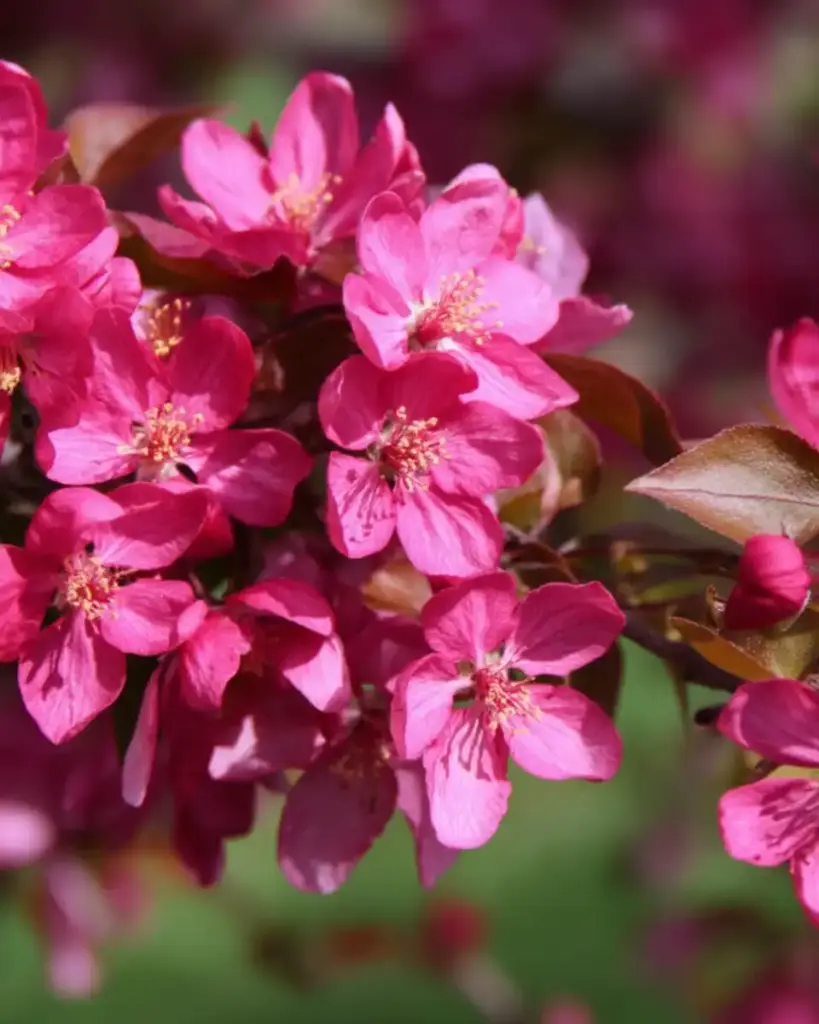
- Height: 15–20 ft.
- Hardiness Zone: 4–8
- Sun: Full sun
- Key Features: Fragrant white or pink blossoms, colorful fall fruits
- Wildlife: Attracts birds and pollinators
With their lush springtime display and autumn fruit, flowering crabapples are a seasonal showstopper. While not evergreen, their dense branching can still offer visual separation from neighbors much of the year.
🌸 3. Flowering Cherry (Prunus serrulata)
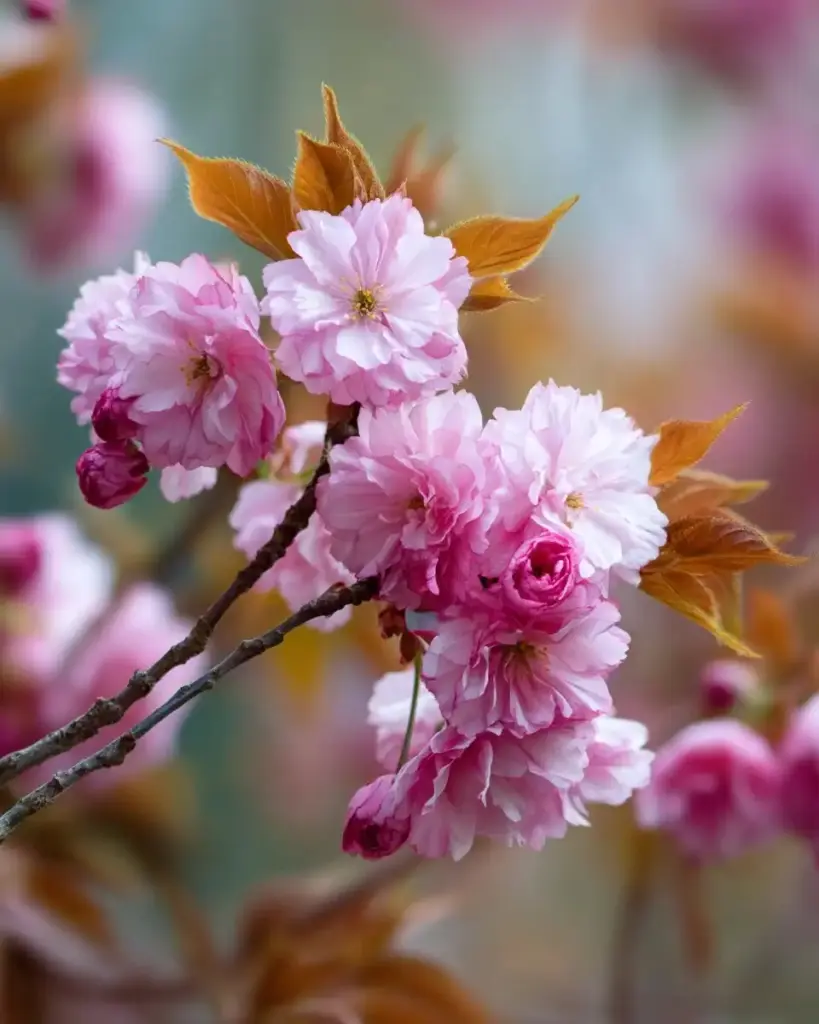
- Height: 15–25 ft.
- Hardiness Zone: 5–8
- Sun: Full sun
- Key Features: Showy spring blooms, symmetrical form
- Lifespan: 30–40 years
- Caution: Toxic to pets
If you’re looking to blend beauty with privacy, flowering cherry trees bring elegance and grace to your yard. Their relatively short lifespan is offset by their fast growth and breathtaking spring flowers.
🌳 4. American Hornbeam (Carpinus caroliniana)
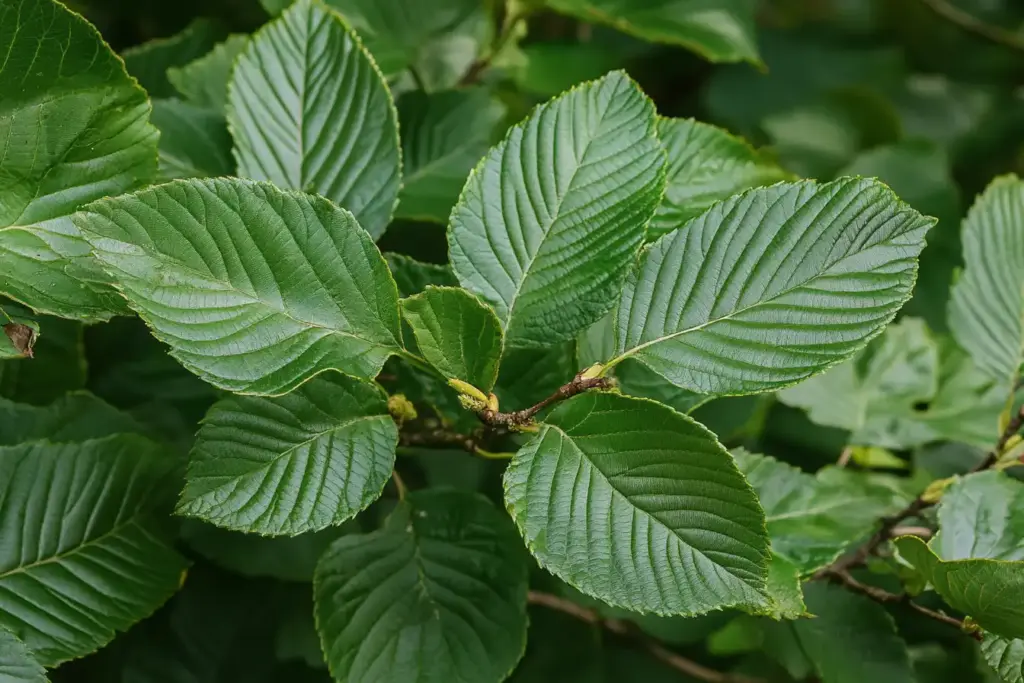
- Height: 20–35 ft.
- Hardiness Zone: 3–9
- Sun: Full sun to full shade
- Key Features: Blue-gray bark, stunning fall color, low maintenance
Also called “musclewood” for its sinewy trunk, American hornbeam is a sturdy deciduous tree that works well along fence lines and larger property boundaries. It thrives in both sun and shade, making it versatile for many yards.
🌺 5. Purpleleaf Plum (Prunus cerasifera)
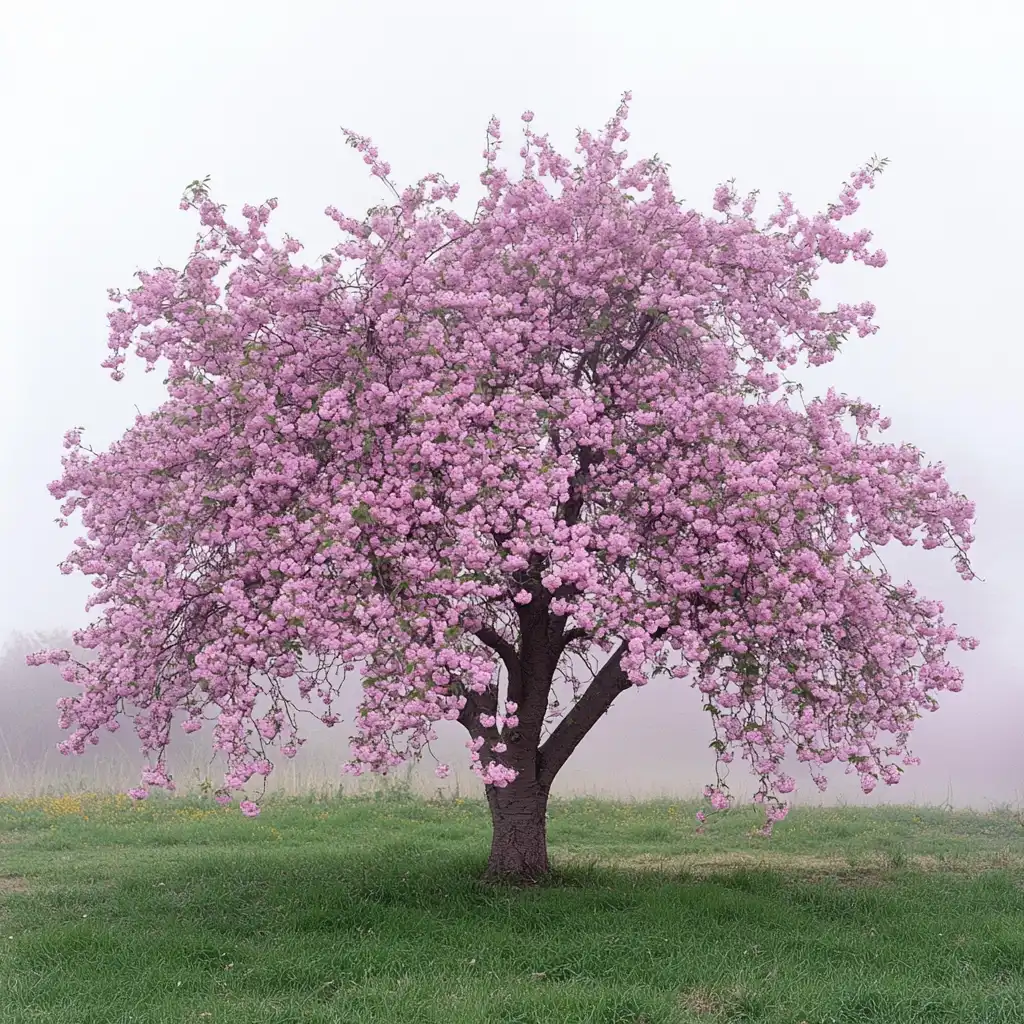
- Height: 15–25 ft.
- Hardiness Zone: 4–9
- Sun: Full to partial sun
- Key Features: Deep purple leaves, spring flowers
- Caution: Toxic seeds and foliage
With bold purple foliage and a neat shape, purpleleaf plum trees add dramatic flair to your backyard privacy screen. Their ornamental appeal is hard to beat, though they may need some extra care in harsh urban conditions.
🌲 6. American Mountain Ash (Sorbus americana)
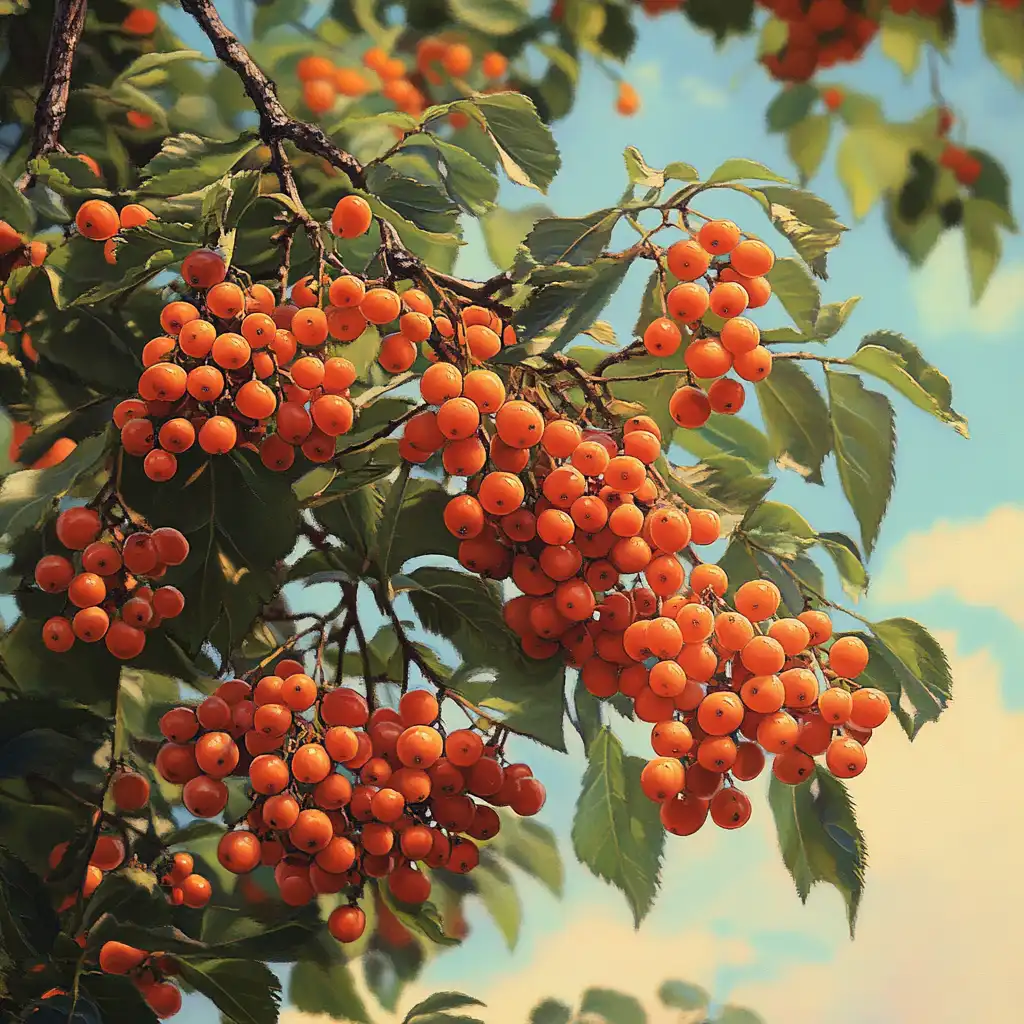
- Height: 15–30 ft.
- Hardiness Zone: 2–6
- Sun: Full sun to part shade
- Key Features: Red-orange berries, fall color, wildlife magnet
If you want year-round interest with multi-season appeal, the American mountain ash is a strong contender. While not a true evergreen, it offers stunning spring flowers, brilliant autumn foliage, and clusters of berries that birds love.
🌸 7. Crepe Myrtle (Lagerstroemia indica)
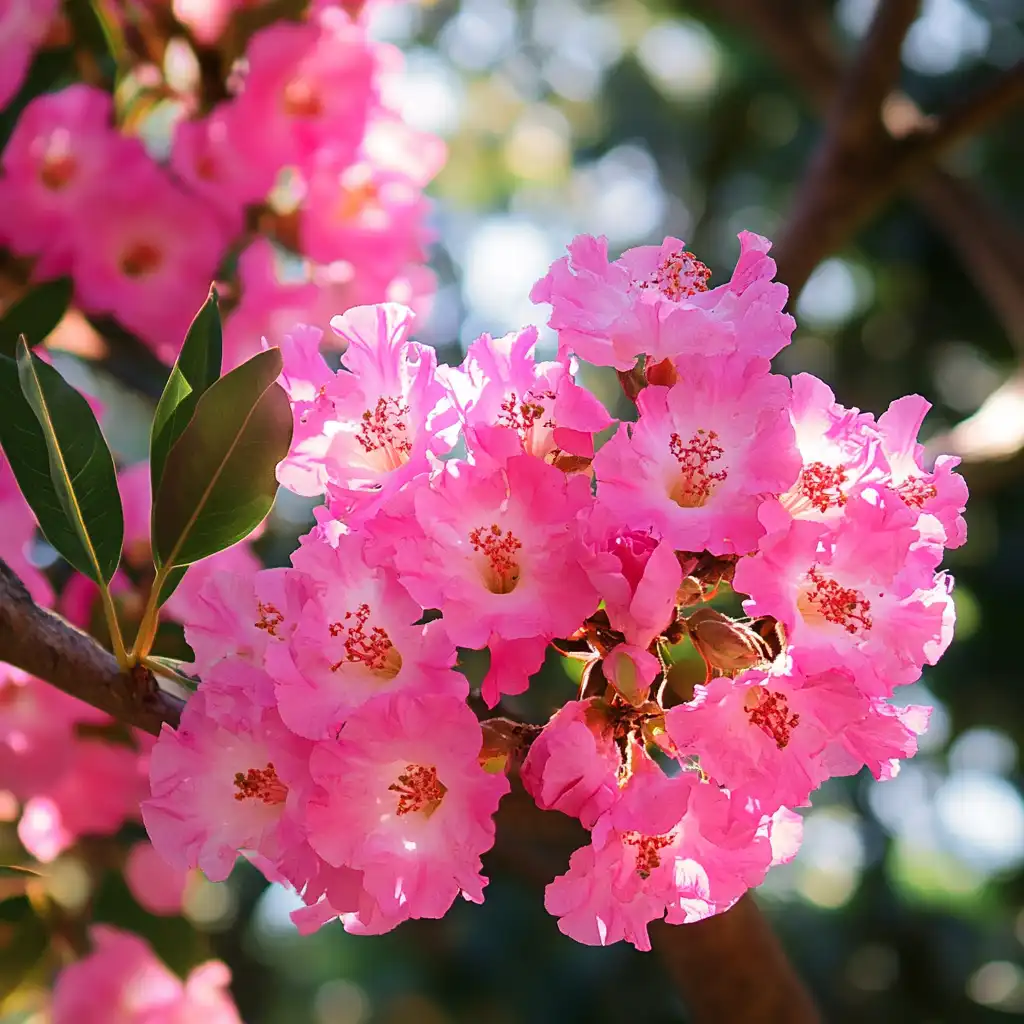
- Height: 6–25 ft.
- Hardiness Zone: 6–9
- Sun: Full sun
- Key Features: Long bloom season, exfoliating bark, fast-growing
- Best Cultivar for Privacy: ‘Natchez’
Crepe myrtles add charm and color like no other. With a rapid growth rate and a variety of cultivars, you can find one to match almost any yard. When planted in rows, tall types like ‘Natchez’ can serve as an effective flowering privacy screen.
🌼 8. Little Gem Magnolia (Magnolia grandiflorum ‘Little Gem’)
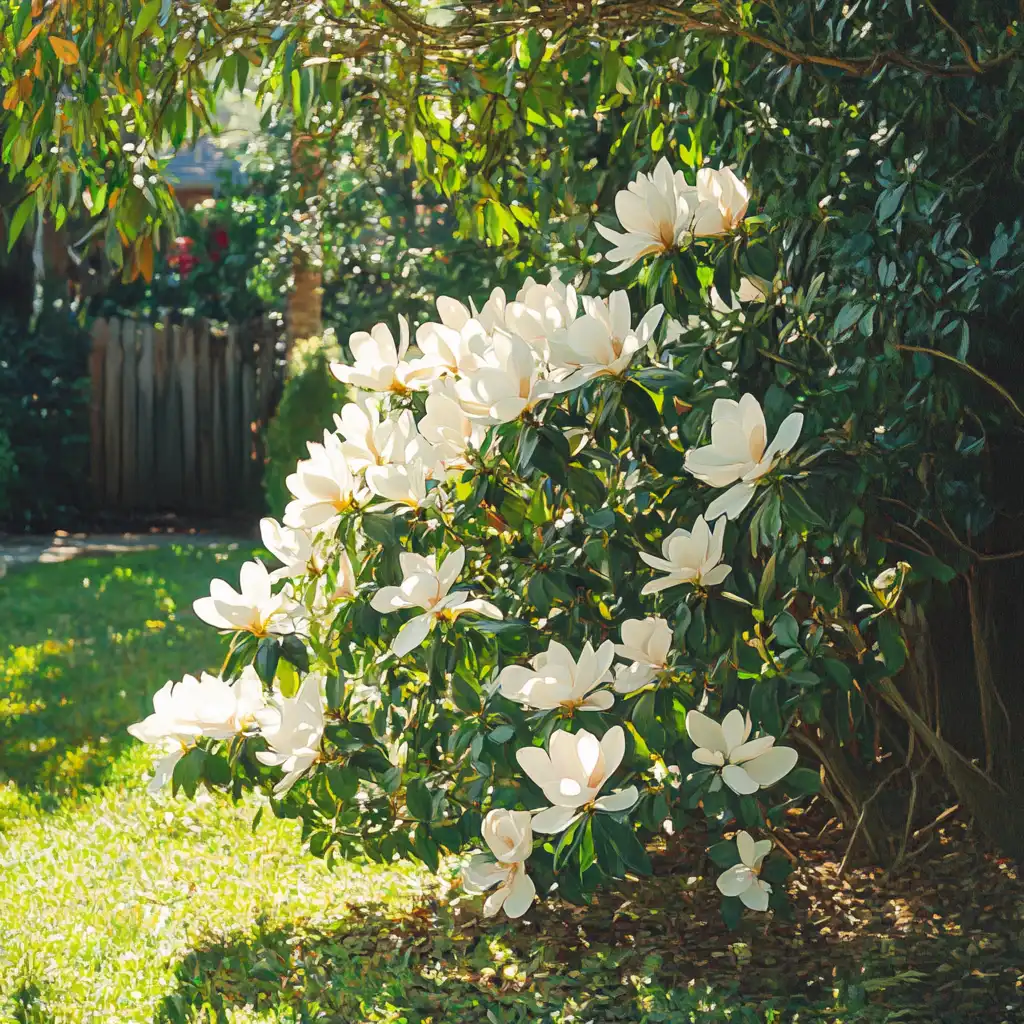
- Height: 15–20 ft.
- Hardiness Zone: 6–10
- Sun: Full sun to light shade
- Key Features: Evergreen, fragrant white flowers, glossy leaves
Compact yet striking, the Little Gem magnolia is perfect for smaller yards needing evergreen coverage. It brings Southern charm and year-round beauty with minimal maintenance once established.
🍂 9. Young’s Weeping Birch (Betula pendula ‘Youngii’)
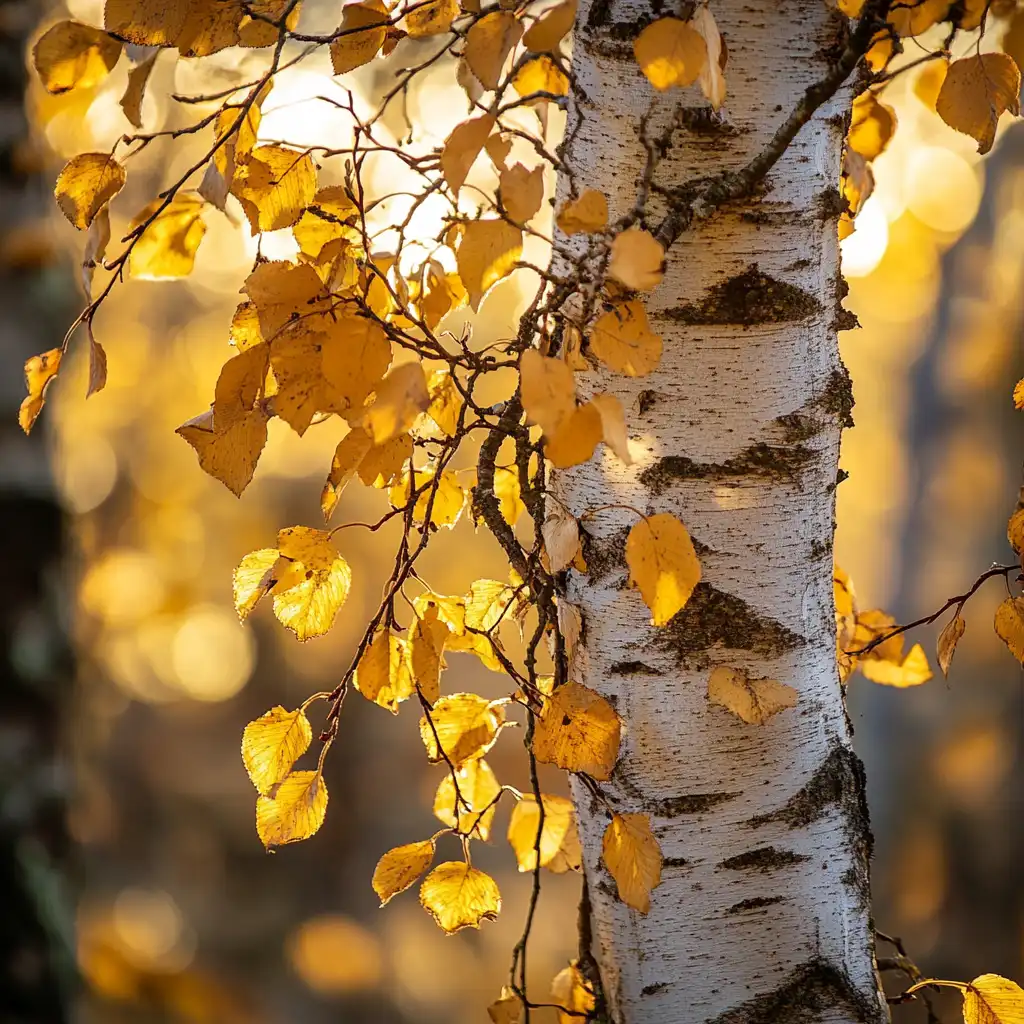
- Height: 6–12 ft.
- Hardiness Zone: 3–9
- Sun: Full to part sun
- Key Features: White bark, drooping branches, yellow fall color
Ideal for adding texture and movement to your fence line, this dwarf birch adds an elegant, airy feel. Grouped together, they provide a partial screen while allowing light through.
🌲 10. Arborvitae ‘Emerald Green’ (Thuja occidentalis)
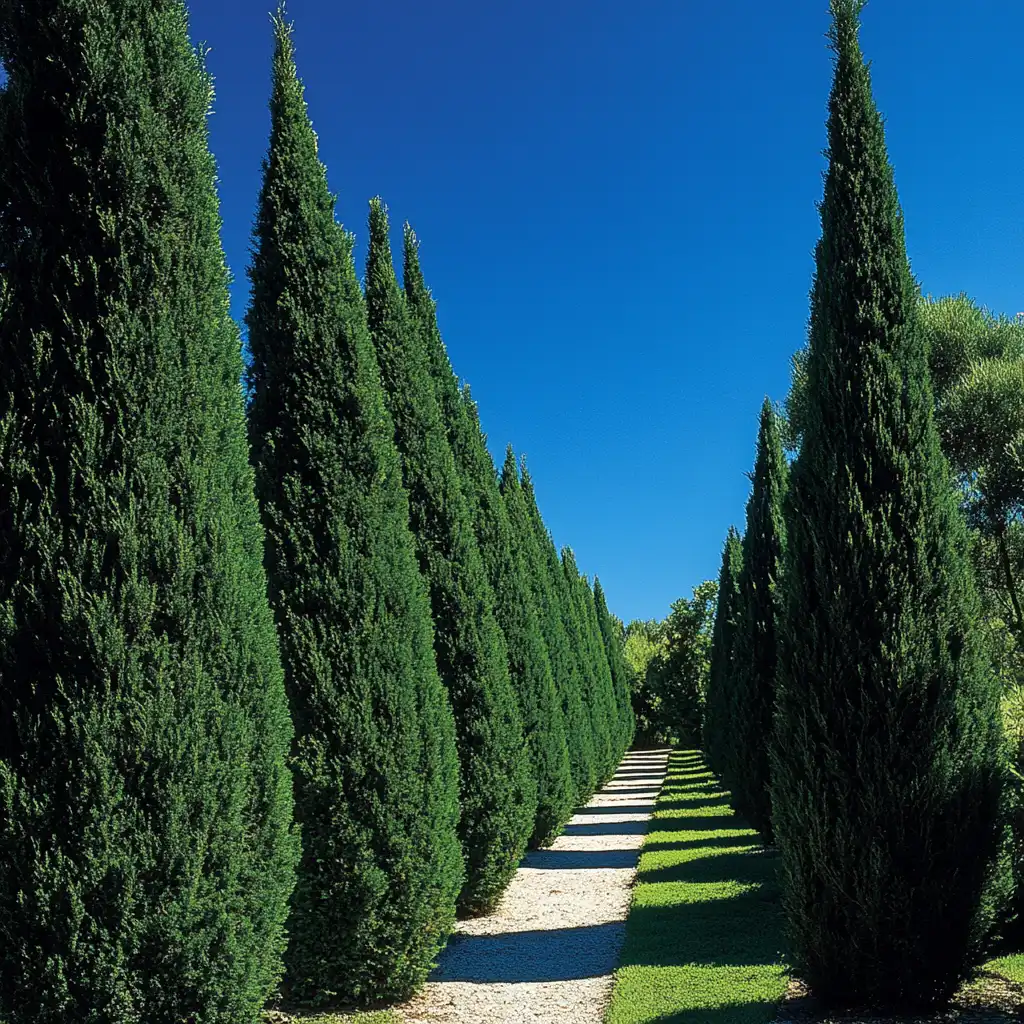
- Height: 12–20 ft.
- Hardiness Zone: 2–7
- Sun: Full to part sun
- Key Features: Dense evergreen foliage, columnar shape, low-maintenance
One of the most popular choices for fence-line privacy, ‘Emerald Green’ arborvitae grows in a tidy, narrow form ideal for tight spaces. Plant them closely for a living wall effect.
🌿 11. Skip Laurel (Prunus laurocerasus)
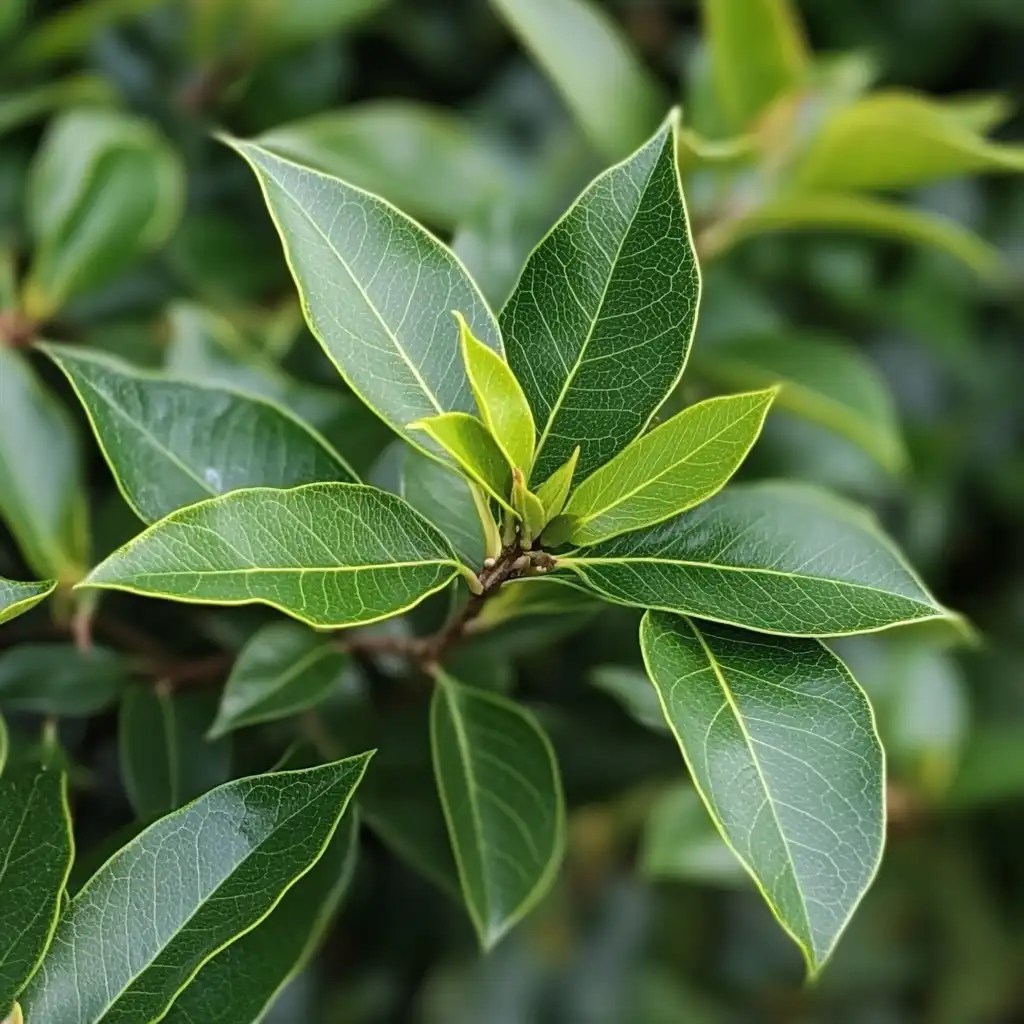
- Height: 10–25 ft.
- Hardiness Zone: 4–9
- Sun: Full sun to part shade
- Key Features: Glossy evergreen leaves, white flowers, red berries
- Caution: Foliage and berries are toxic
Skip laurel creates a formal, dense hedge with year-round privacy. It’s urban-tough, adapts to various soils, and offers seasonal flowers and berries for added interest.
🌲 12. Spartan Juniper (Juniperus chinensis ‘Spartan’)
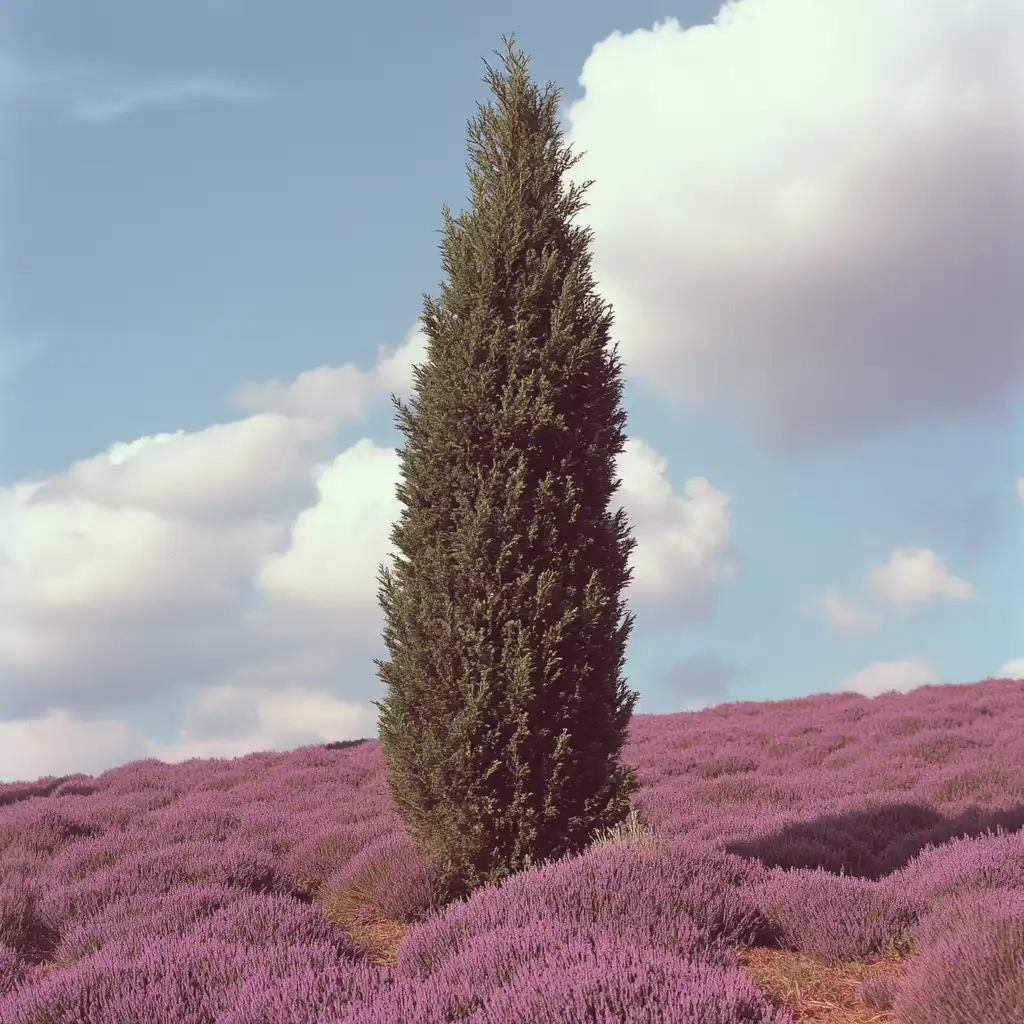
- Height: 15 ft.
- Hardiness Zone: 5–9
- Sun: Full to part sun
- Key Features: Narrow pyramid shape, evergreen, drought-tolerant
Spartan juniper is perfect for narrow planting strips along fences. Its strong vertical form adds structure, and it’s tough enough to thrive in poor soil and dry conditions.
🌲 13. Dwarf Italian Cypress (Cupressus sempervirens)
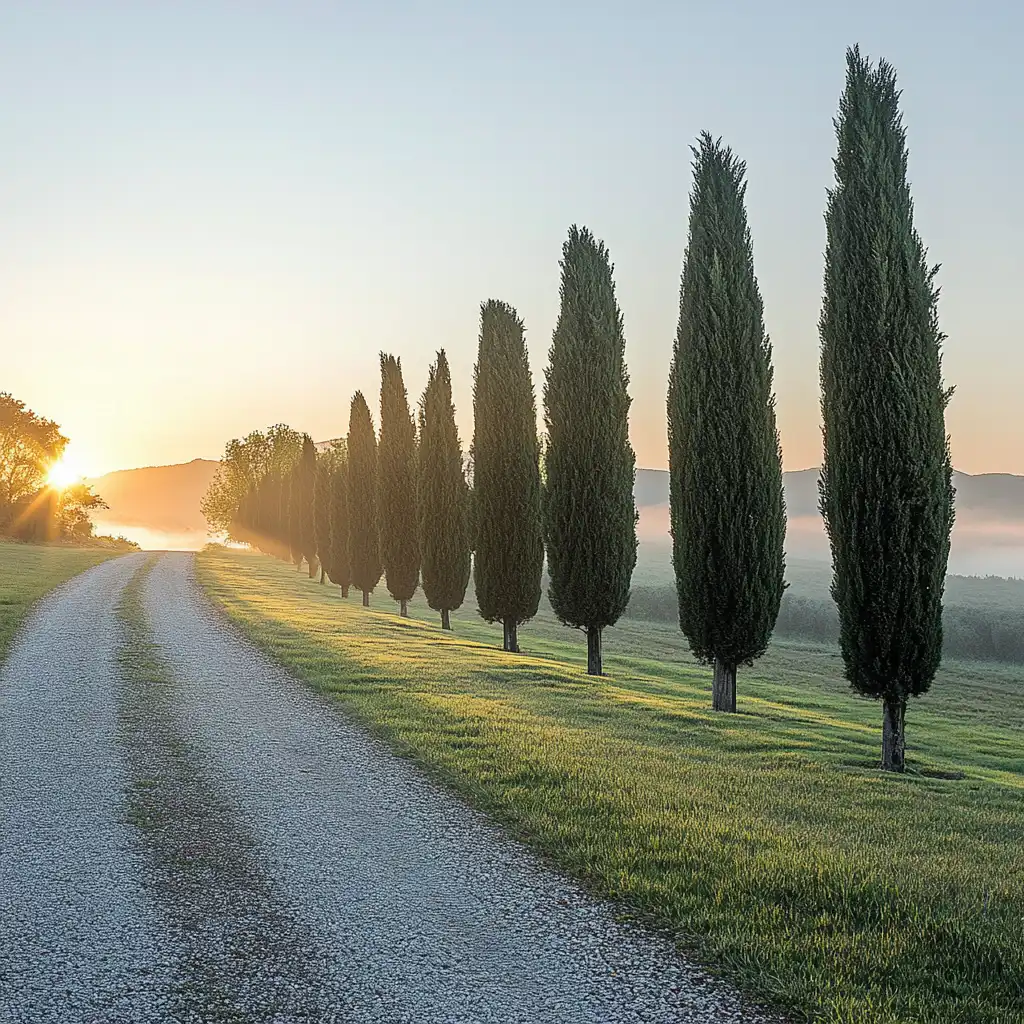
- Height: 10–30 ft.
- Hardiness Zone: 7–10
- Sun: Full to part sun
- Key Features: Tall and narrow, formal look, architectural structure
These striking vertical evergreens add a Mediterranean flair to any fence line. Use them in rows for a dramatic, clean privacy barrier with minimal spread.
🌺 14. Dragon Lady Holly (Ilex × aquipernyi)
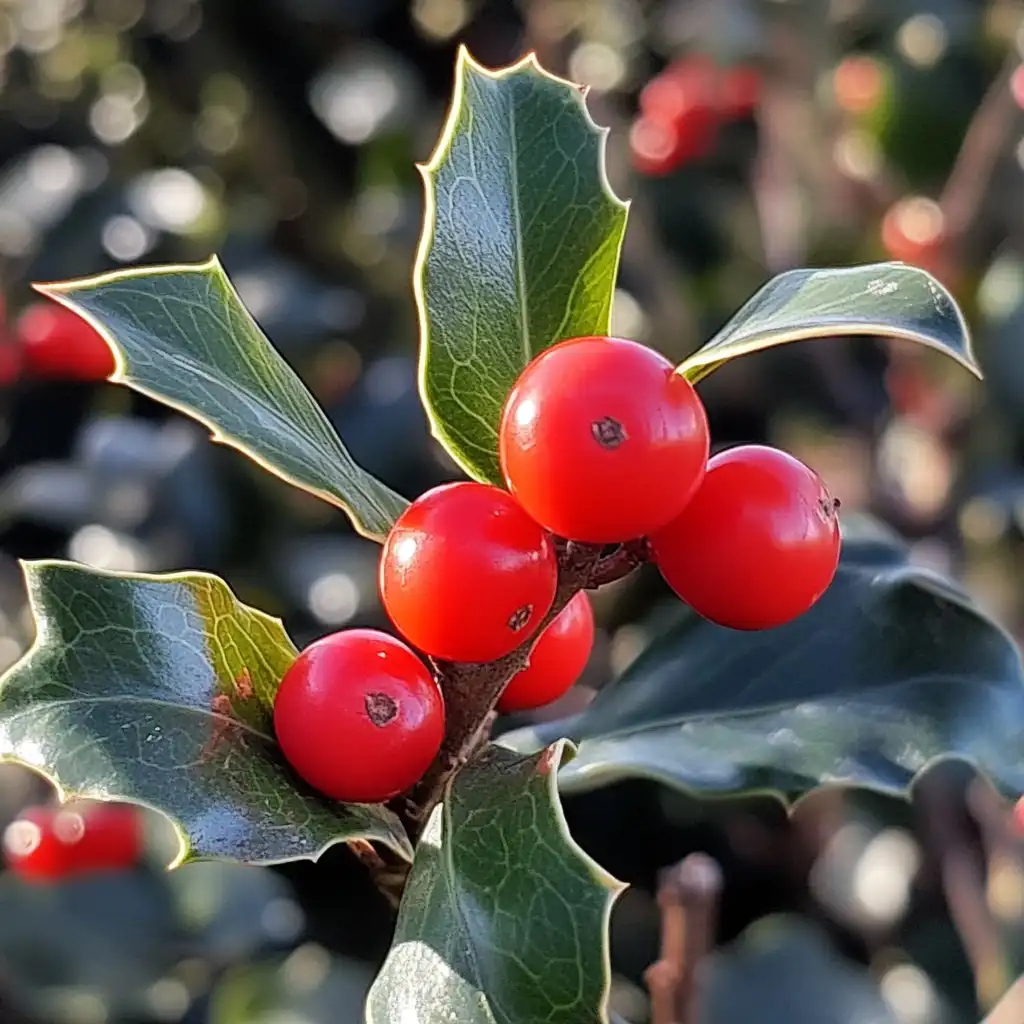
- Height: 10–20 ft.
- Hardiness Zone: 5–7
- Sun: Full sun to part shade
- Key Features: Red berries, glossy evergreen foliage, female/male pair required
- Caution: Berries are toxic
This dense, upright holly makes an attractive and secure privacy tree with a sharp aesthetic. It also supports pollinators and birds when both sexes are planted nearby.
🌲 15. Black Dragon Japanese Cedar (Cryptomeria ‘Black Dragon’)

- Height: 6–10 ft.
- Hardiness Zone: 5–9
- Sun: Full to part sun
- Key Features: Dark, dramatic foliage, dense form, low maintenance
With nearly black foliage and a sculptural silhouette, this compact evergreen adds a unique touch to privacy screens. Great for modern or zen-style gardens.
🌸 16. Viburnum (Viburnum spp.)
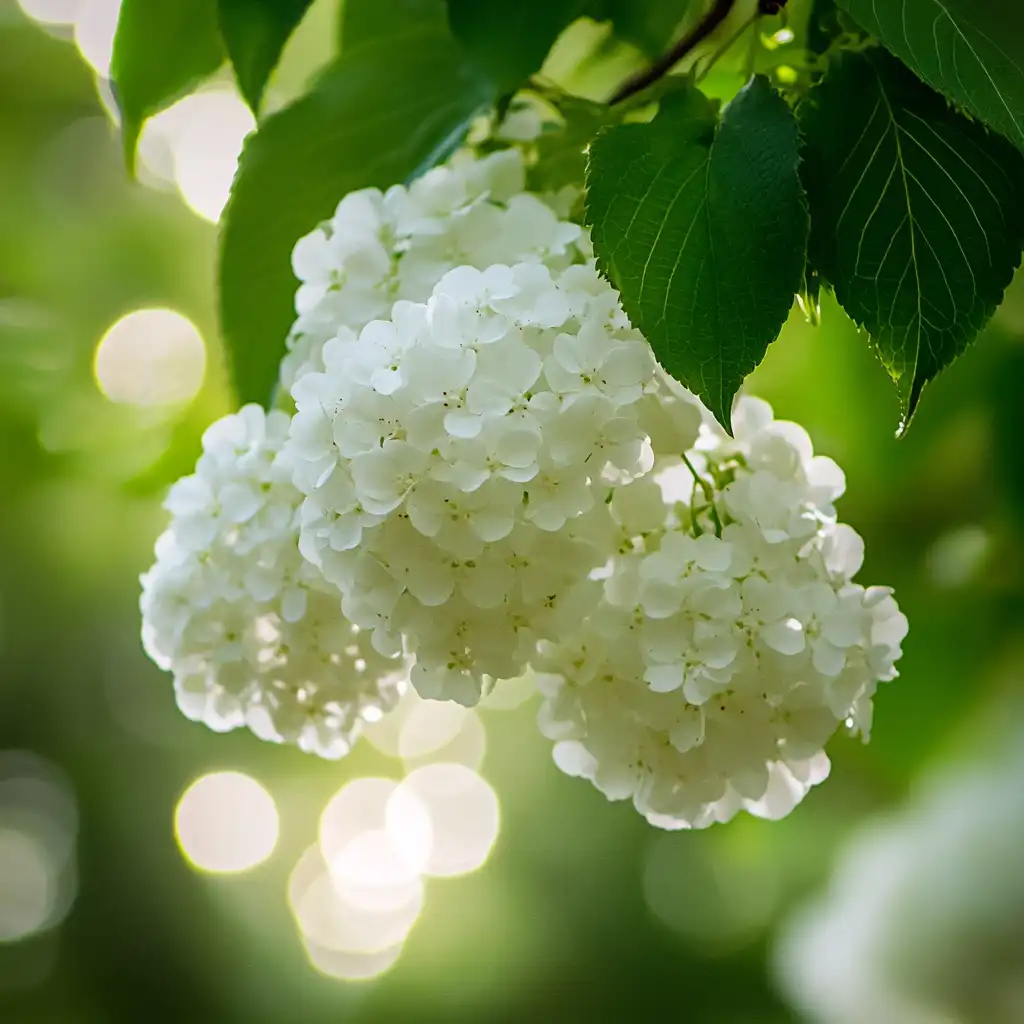
- Height: 3–20 ft.
- Hardiness Zone: 2–9
- Sun: Full to part sun
- Key Features: Variety of bloom styles, deciduous and evergreen types
Viburnums offer massive diversity—from hedge-forming evergreens to flowering deciduous types. Some bloom in spring; others in summer, and many offer fantastic fall foliage.
🌿 17. Fragrant Tea Olive (Osmanthus fragrans)
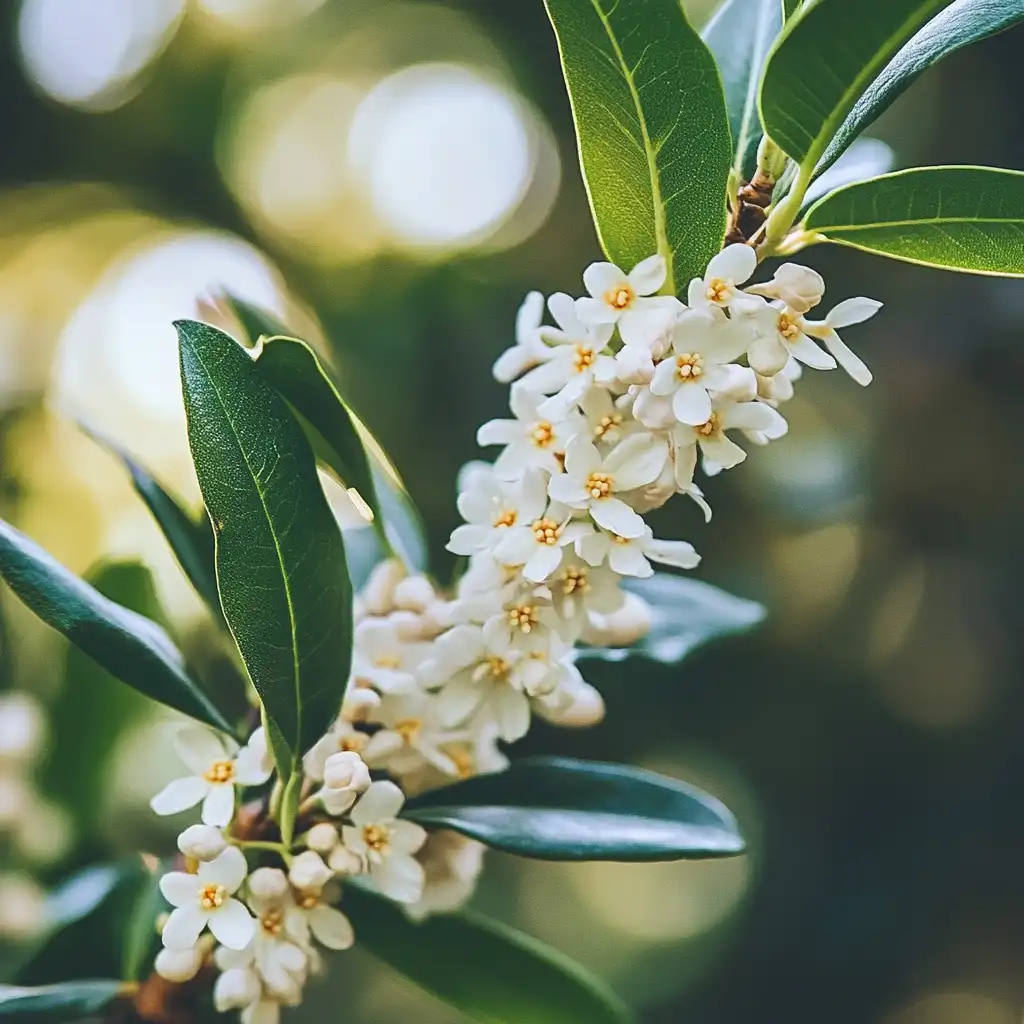
- Height: 20–30 ft.
- Hardiness Zone: 8–11
- Sun: Full to part sun
- Key Features: Jasmine-scented flowers, dense evergreen leaves, slow-growing
If fragrance is your top priority, this tree delivers. It’s evergreen, multi-stemmed, and highly ornamental—perfect for adding privacy and perfume to your patio or yard.
✅ Tips for Choosing and Planting Privacy Trees
- Measure Before You Plant: Always check the mature height and width of your chosen trees to avoid overcrowding and property line issues.
- Spacing Matters: Plant trees according to their mature spread. For example, a tree with a 10-ft spread should be planted at least 10 ft from your fence or the next tree.
- Evergreen vs. Deciduous:
- Evergreens: Best for year-round screening and consistent structure.
- Deciduous: Offer seasonal interest—flowers, color, wildlife—but lose leaves in winter.
- Mind the Mess: Avoid fruiting trees near patios, driveways, or pools to reduce debris.
- Wildlife-Friendly Options: Many flowering and fruiting trees attract pollinators, birds, and butterflies.
🌿 Final Thoughts: Choosing the Best Privacy Trees for Your Yard
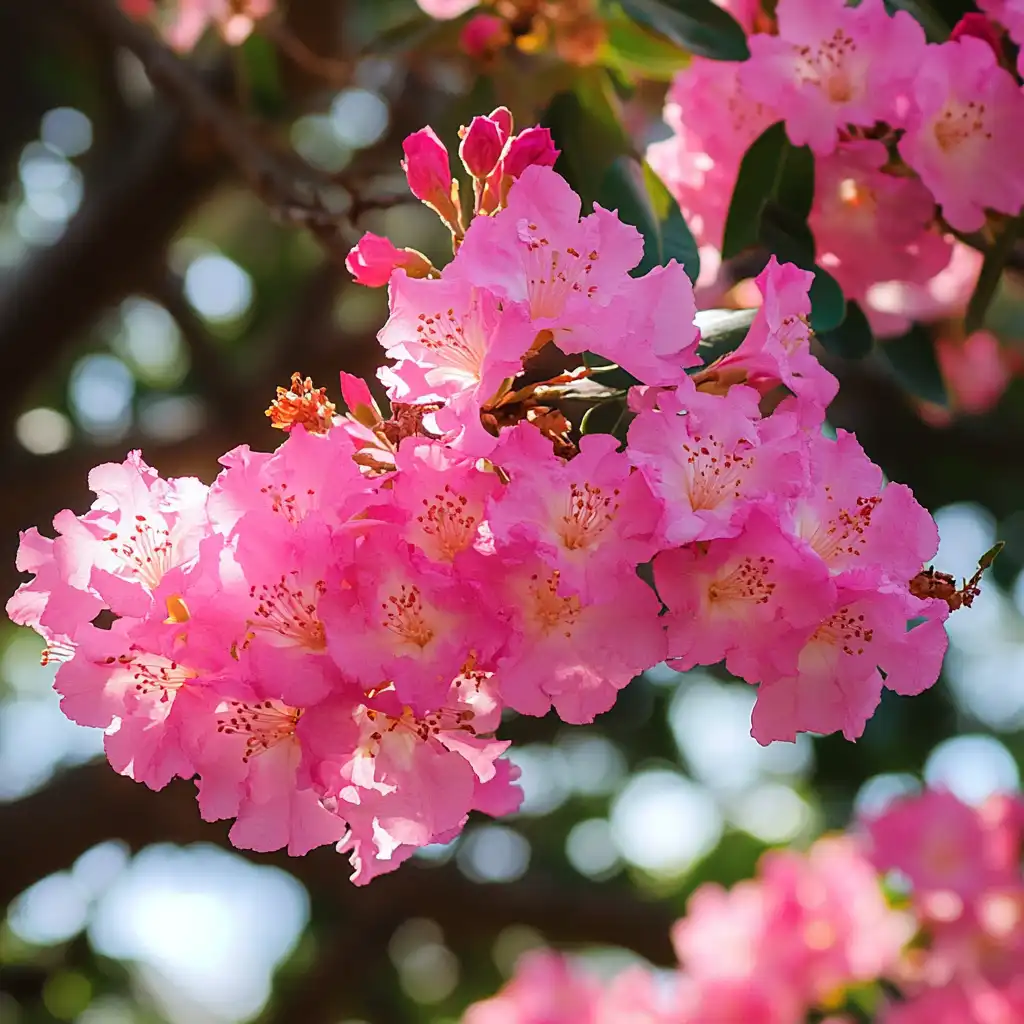
Creating a peaceful, private outdoor sanctuary doesn’t mean settling for uninspired fencing or costly hardscaping. By carefully selecting the best privacy trees for your yard, you can transform your space with natural elegance, texture, and long-term value. These trees serve as a living green barrier that grows more beautiful over time, offering both aesthetic appeal and practical benefits.
With the right mix of privacy trees, you can enjoy:
- A lush, natural screen that shields your yard from neighbors or street views
- Seasonal blooms, foliage color, and bark texture that elevate your landscape’s visual interest
- An increase in property value and curb appeal—especially when used in a cohesive front yard landscaping design
- An inviting habitat for birds, bees, and butterflies, which adds ecological value to your garden
- Year-round greenery with evergreens, or striking seasonal displays with deciduous trees
Whether you prefer the structured, upright form of evergreens like arborvitae or the flowering charm of ornamental trees, there’s a wide range of privacy trees to fit your needs. Our guide to the 17 best privacy trees for fence-line screening can help you narrow down your options based on size, speed of growth, sun exposure, and visual impact.
Want to build an even more cohesive look? Combine your privacy planting with walkable ground cover for garden paths or integrate them into affordable backyard renovation ideas for a complete transformation.
📌 Pro Tip: Match the Tree to Your Yard’s Needs
Use this quick checklist when selecting a tree:
| Consideration | What to Ask |
|---|---|
| Size | How tall and wide will it get? |
| Growth Rate | Do I want fast or steady growth? |
| Maintenance | Will I need to prune or water often? |
| Sun Exposure | Full sun or shade-tolerant? |
| Wildlife Support | Do I want to attract birds/pollinators? |
| Toxicity | Are pets or kids using the space? |
| Aesthetic Goals | Evergreen wall or seasonal flowers? |
📥 Ready to Plant? Here’s What to Do Next:
- Measure your planting area – width, overhead clearance, and distance to neighbors.
- Check your USDA zone – match trees to your climate.
- Visit a local nursery or order online – request cultivars mentioned above.
- Plan your spacing – account for mature size, not current sapling size.
- Add mulch and water deeply – support root establishment in year one.
📈 Optimize Your Outdoor Living – Naturally
Privacy trees aren’t just functional—they’re foundational to a beautiful, sustainable yard. Whether you’re screening a pool, shielding a patio, or framing a garden, these living fences bring unmatched character and long-term value.
❓ Frequently Asked Questions (FAQ)
🌳 What are the best privacy trees for small yards?
For smaller landscapes, it’s essential to choose privacy trees that stay narrow yet grow tall enough to block views. Among the best privacy trees for small yards are:
- ‘Emerald Green’ Arborvitae – grows in a compact columnar shape and stays under 4 feet wide, perfect for tight spaces.
- Spartan Juniper – a slender, pyramidal evergreen that thrives even in dry conditions.
- Dwarf Italian Cypress – adds a formal, Mediterranean vibe while maintaining a very narrow footprint.
If you’re designing a cozy yard, take a look at our curated small yard landscape ideas for creative inspiration.
🌿 Which privacy trees grow the fastest?
Need results quickly? Some fast-growing privacy trees can create a lush green screen in just a few seasons:
- Crepe Myrtle – grows up to 2 feet per year and delivers stunning blooms.
- Thuja ‘Green Giant’ – among the best privacy trees for large spaces, growing 3–5 feet annually.
- Leyland Cypress – although not featured in our main list, it’s another classic fast-growing privacy tree.
For more fence-line solutions, visit our guide on fast-growing privacy trees along a fence.
🌤️ Do privacy trees work in full shade?
Absolutely, though your choices are a bit more limited. The following privacy trees for shady areas thrive without full sun:
- American Hornbeam – perfect for deep shade and rich fall color.
- Skip Laurel – evergreen, dense, and shade-tolerant, making it one of the best privacy trees for varied lighting conditions.
- Viburnum (some varieties) – offers both flowering and fall color with good shade adaptability.
Want shade-loving companions? Don’t miss our list of shade-tolerant vegetables to grow beneath your trees.
🌲 What is the difference between evergreen and deciduous privacy trees?
- Evergreen privacy trees provide year-round coverage, making them ideal for consistent visual barriers. Arborvitae, holly, and juniper are prime examples.
- Deciduous privacy trees like flowering cherry or crabapple lose leaves in winter, but bring seasonal interest through blooms, fruit, and color.
Blending both types can offer a dynamic, multi-seasonal landscape. Explore combinations in our privacy trees and landscaping ideas.
🐕 Are privacy trees safe for pets and kids?
Not always. Some trees, like:
- Red Buckeye
- Purpleleaf Plum
- Skip Laurel
…can be toxic to pets or humans if ingested. Always check toxicity before planting, especially in pet- or child-friendly yards.
🧱 How close can I plant privacy trees to a fence or property line?
As a general rule:
Plant at least as far away as the tree’s mature spread.
For example, a tree that spreads 10 ft. wide should be planted 10 ft. from your fence or structure. Always check local ordinances or HOA guidelines too.
🌸 Do privacy trees attract birds or pollinators?
Yes! Many flowering and fruiting trees support wildlife:
- Crabapples and Mountain Ash attract birds
- Cherry and Viburnum attract bees and butterflies
- Tea Olive and Holly provide berries and fragrance

